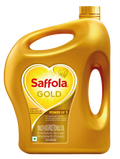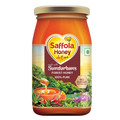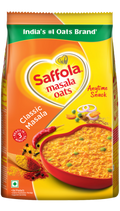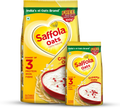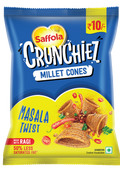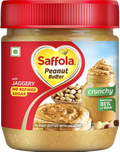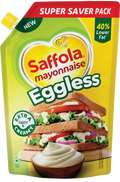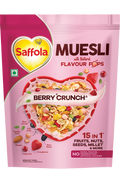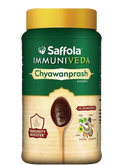31 March, 2022

5 min

19

Cholesterol is spoken about only when it starts to affect your health negatively. But did you know that there is a type of cholesterol that’s good for you and great for your heart health as well? Just like fats, not all types of cholesterol are bad. The good cholesterol is known as High Density Lipoprotein (HDL) and is required for many essential functions in the body and evidence suggests it may also improve your heart health. On the other hand, Triglycerides (TG), Very Low-Density Lipoprotein (VLDL) and Low-Density Lipoprotein (LDL) are known as the bad cholesterol. Choosing the right types of food can help you increase your HDL while also reducing TG, VLDL and LDL. Even for someone who does not typically have any cholesterol related health issues, it is recommended to increase your HDL intake to help improve your heart health. The Indian Heart Association recommends your HDL levels should be in the range of 50-60 mg/dL and mentions every 10-point increase can cut the risk of heart disease by half. Here are some foods that you can consume to lower TG, VLDL and LDL levels and improve HDL-to-LDL ratio to manage your cholesterol levels
- Whole Grains
Compared to refined grains, whole grains are better for your health as they are richer in fibre and contain many other nutrients. Whole grains like barley (also known as jau), millet (bajra), quinoa, and brown rice are high in soluble dietary fibres and other compounds that help lower LDL levels and increase HDL levels, hence should be incorporated in the diet. Other than that, one can also switch from white bread and pasta made with refined flour to whole-wheat bread and pasta.
- High-fibre Fruits
You may already know that fibre is good for the digestive system, but did you know that it can also be great for your heart health? Fruits rich in dietary fibres such as bananas, berries, apples, guavas and pears can help you lower your bad cholesterol which in turn will help reducing the risk of developing Cardiovascular diseases .
- Fatty Fish
There are two types of fish when it comes to fat content - lean fish that are low in fat and fatty fish that have a higher level of fat content. Studies have shown that having fatty fish can help you significantly increase your HDL levels. Fatty fish are also one of the best sources of omega-3 fatty acids, which are great for your heart health and can reduce blood pressure. In India, some of the commonly found fatty fish include Indian oil sardine (mathi), ilish (hilsa), and Indian river shad (suhiya or chaila).
- Nuts
There are many heart-healthy nuts that can make a great addition to your diet. These nuts are not only delicious on their own but can also be added as an ingredient to many dishes. Walnuts are high in omega-3 fatty acids and increase your HDL levels. Almonds can also increase HDL levels, and can be added to the diet as almond flour, a more nutritious substitute for refined flour.
- Chia Seeds & Flaxseeds
Chia seeds and Flaxseeds are another source of foods containing omega-3 fatty acids which increases your HDL level and are hence beneficial for cardiovascular health Chia seeds are blander in taste while flaxseeds have a nuttier flavour. Both these seeds come with many health benefits — they can help you lower your blood sugar, they’re great for digestion and can help you feel fuller. You can add them to yoghurt, include them in smoothies or oats, or even add them on top of salads for a nutritional boost.
- Dates
Dates are known for their low glycaemic index. The glycaemic index refers to how fast your body converts carbs in the food to glucose (blood sugar) and two foods with the same amount of carbs can have different glycaemic indexes. The lower the glycaemic index, the less it affects your blood sugar which is why dates don’t cause your blood sugar levels to rise as much as compared to other sugar rich foods.. Clinical studies have shown dates can potentially have a beneficial effect on lipid profile, especially in reducing total cholesterol and elevating HDL, because of its high polyphenolic content. Besides being a great sweet snack, you can also replace sugar in many dishes with dates or even make a paste with dates to use as a healthy, multi-purpose sweetener.
- Oatmeal
While oats don’t increase your HDL cholesterol, they do help you lower your LDL cholesterol, improving your HDL-to-non-HDL cholesterol ratio. Oats are rich in β-glucan, a fibre known for its cholesterol benefits and reducing the risk of cardiovascular diseases. Plus, while preparing oatmeal, you can add many other heart-healthy ingredients — fruits, dates, nuts, and seeds can all be included in your daily breakfast in one bowl of oatmeal. In addition to adding these foods to your diet, another great way to increase your HDL is by cooking your meals in heart-healthy oils. Blended edible oils such as Saffola Gold are a healthier alternative to traditional cooking oils that may not have a good balance of SFA:MUFA:PUFA required for good nutrition. Saffola Gold is made with two oils so you can get the nutritional benefits of both in a single edible oil. It helps you increase HDL and lower LDL to ensure overall well-being of your heart health. Want to take even better care of your heart? Read about heart-healthy habits you can start today.
References:
https://pubmed.ncbi.nlm.nih.gov/32728756/
https://www.ncbi.nlm.nih.gov/pmc/articles/PMC6566984/
https://pubmed.ncbi.nlm.nih.gov/27363518/
https://www.ncbi.nlm.nih.gov/pmc/articles/PMC4989070/ https://my.clevelandclinic.org/health/articles/17290-omega-3-fatty-acids https://care.diabetesjournals.org/content/27/12/2777
https://pubmed.ncbi.nlm.nih.gov/26269239/
https://pubmed.ncbi.nlm.nih.gov/27193017/
https://www.ncbi.nlm.nih.gov/pmc/articles/PMC2989356/
https://pubmed.ncbi.nlm.nih.gov/19681613/ https://pubs.rsc.org/en/content/articlelanding/2018/FO/C7FO02006F https://pubmed.ncbi.nlm.nih.gov/27724985/

